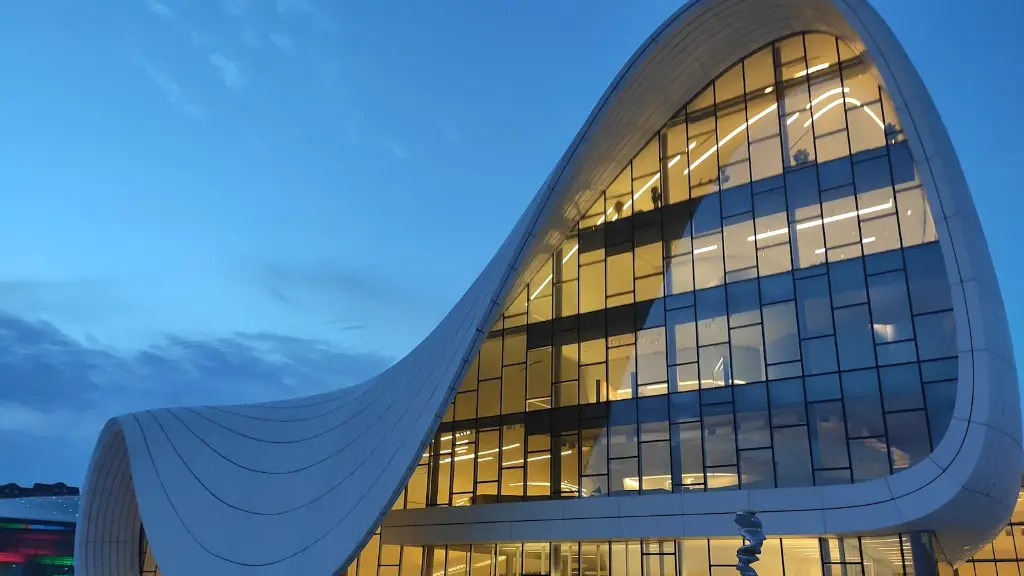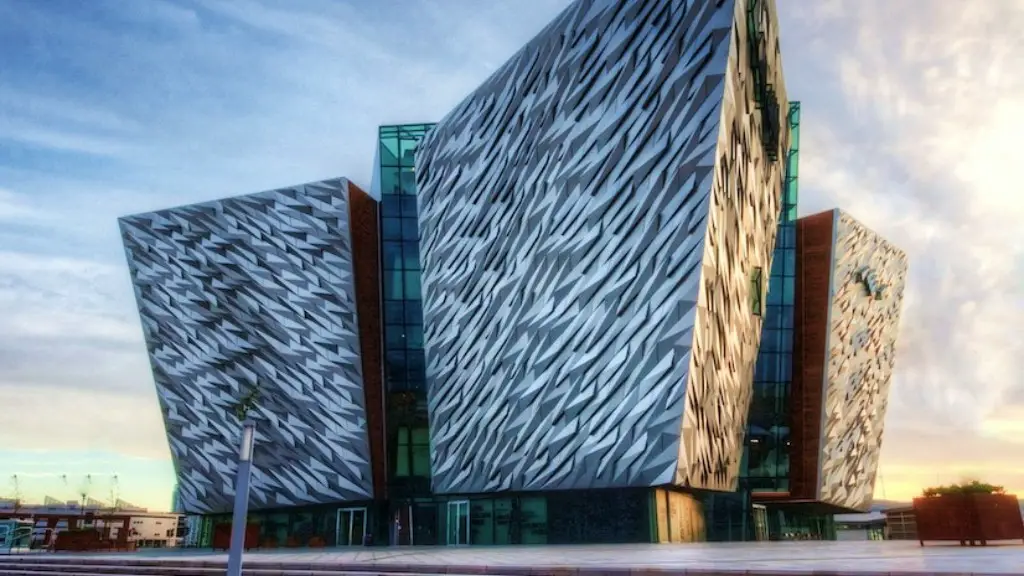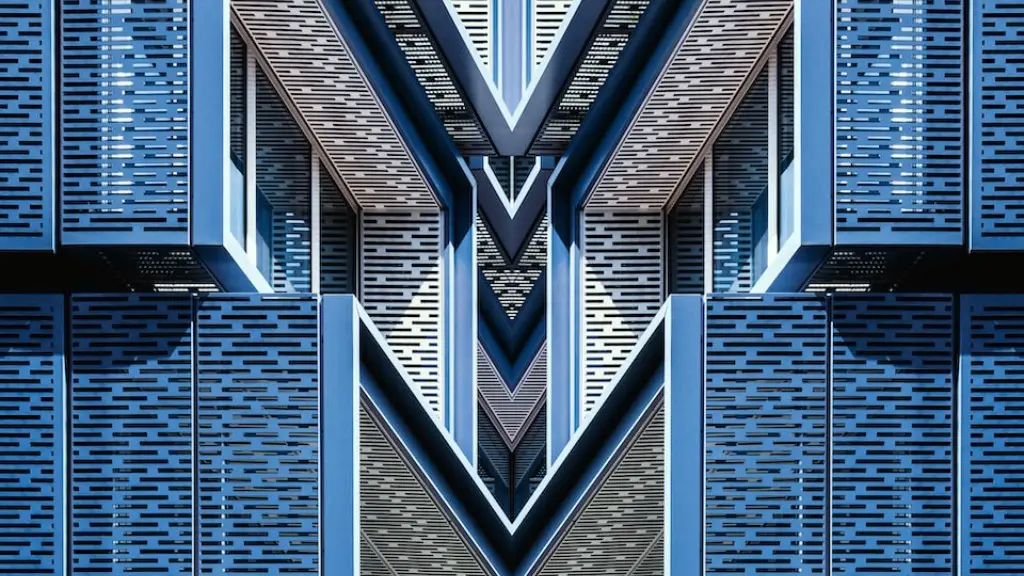The Impact of Artificial Intelligence on Architecture
In the 21st century, technology has become so heavily embedded and omnipresent that it is often hard to imagine life without it. This is especially true in the field of architecture, where a new wave of artificial intelligence (AI) and robotic technologies are changing the way architects design, create, and build. In recent years, there has been an increase in the use of AI in various design processes, ranging from enhancing the look of a building to even suggesting new designs. This raises the question: Will AI be able to take over architecture and render existing architects obsolete?
On one hand, some experts believe that it is only a matter of time before AI will fully replace humans when it comes to designing, constructing, and managing buildings. Computers have shown immense potential with their ability to interpret the humongous mountains of data that are part of the construction process. Furthermore, AI algorithms can study seemingly infinite data points and both analyze and interpret them faster than any human can. For example, AI-driven design software programs are already able to identify patterns and inconsistencies much more quickly than human eyes.
Apart from design, AI has drastically changed how constructions are managed. Robotics like drones are now able to perform regular inspections of building sites, as well as assist with repetitive tasks such as pouring concrete. Furthermore, AI-driven software can be used to automatically open and close doors, adjust lighting, and even monitor the environment within the building. In essence, AI serves as a powerful tool that can be applied to nearly every part of the construction process, making it more efficient and freeing up time for architects to focus on more creative tasks.
On the other hand, many experts argue that AI will not replace architects altogether. Despite its growing popularity, AI still lacks the capacity of human creativity. AI-driven software is biased towards existing algorithms, which means that its output is usually limited to existing standards. Humans, on the other hand, can explore novel solutions and come up with creative designs that can truly stand out. This is especially true for aesthetically complex designs that require the incorporation of sophisticated details.
In addition, AI might struggle with certain aspects of design that cannot be solved with algorithms. Architects often practice iterative design processes, in which they revise and refine their designs over and over again until they are satisfied with the outcome. This type of design process often entails a plethora of iterations and subtle modifications that may be too complex for AI to realistically understand and handle.
At the end of the day, AI is here to stay. Although it is true that AI can assist in the design process and enable architects to do their jobs with greater speed and efficiency, it is also evident that AI still has a long way to go before it can entirely replace humans. In any case, the future of architecture definitely looks promising.
Safety Implications of AI in Architecture
Amidst the growing popularity of artificial intelligence in architecture, one important question is frequently overlooked: What are the potential safety implications of AI in architecture? As with any new technology, AI-driven construction solutions could potentially introduce a variety of risks to various projects. One example is autonomous drones, whose lack of a human supervisor could lead to dangerous conditions such as inadvertent collisions with people and objects, or even misuse of hazardous materials.
Moreover, AI-driven systems have been known to be quite unreliable in some cases. In instances where AI-driven robots are tasked with performing tasks such as welding, the risk of error is significantly higher, as these machines are not capable of exhibiting human judgment and can only operate within a predetermined set of parameters. As a result, a single mistake by the robot can lead to a multitude of safety issues, which could even be catastrophic.
Finally, as in any other industry, certain ethical considerations must be made when it comes to deploying AI in the field of architecture. For instance, there is the potential for AI-driven solutions to discriminate or manipulate certain groups of people. In addition, the potential for AI to be used for malicious purposes such as hacking into building systems must also be addressed.
Overall, the widespread use of AI in architectural projects could bring about a host of both risks and benefits. As with any new technology, certain precautions must be taken in order to ensure that AI-driven solutions are deployed safely and ethically. With the right safety measures in place, AI could serve as an invaluable tool in the field of architecture.
How AI Could Revolutionize Architecture
As artificial intelligence becomes more prevalent in the field of architecture, it is also beginning to revolutionize the way buildings and cities are designed, as well as how they are managed and maintained. By leveraging AI algorithms, architects can explore a greater range of possibilities in terms of design. For instance, AI-driven design software can rapidly generate thousands of valid solutions for a particular project without relying on human input.
In addition, AI can prove to be a powerful tool for optimization. AI algorithms can quickly analyze large amounts of data and identify patterns to optimize design decisions. This can be applied to various stages of the design and construction process, such as streamlining the layout of a building and optimizing its energy efficiency. As a result, AI can lead to faster, more cost-effective designs.
Finally, AI can also play a crucial role in day-to-day operations in a building by sensing changes in the environment and responding accordingly. AI-driven algorithms can interpret data points such as temperature, humidity, and occupant occupancy rate, allowing for automatic adjustments in order to maintain optimal conditions. On a larger scale, AI can also be used to identify patterns in the way cities are utilized, offering valuable insights for urban development.
To summarize, AI has the potential to revolutionize architecture in a myriad of ways. From helping to streamline the design process to orchestrating day-to-day operations in a building, AI is becoming a ubiquitous tool that can be utilized to unlock a greater range of possibilities. However, its use must also be accompanied by safety protocols and responsible measures in order to ensure it is used in an ethical and equitable way.
The Legal Implications of AI in Architecture
As the use of artificial intelligence in architecture continues to grow, it is essential to consider the legal implications that come with it. The main legal concern with AI is its potential to infringe on intellectual property rights. For example, if a software program is used to generate a design, the question of who owns the rights to the design becomes an issue. Furthermore, courts may not recognize algorithms as manufacturers, meaning that designers and architects would need to prove that they originated the designs. As a result, legal protection for AI-generated designs may be weak or non-existent.
In addition, questions about the liability of AI-driven robots in construction sites arise. In instances where a robot causes damage to a building, who would be held responsible? This could be especially tricky in cases where the AI-driven solutions are provided by a third party, making it difficult to determine who is responsible for the robot’s actions.
Moreover, data privacy considerations should also be taken into account with AI-driven solutions. AI systems are typically used to record and analyze vast amounts of data, which can lead to potential privacy issues. Therefore, it is important for architects and designers to find ways to ensure that users’ data is adequately protected.
To conclude, AI-driven solutions come with their own unique set of legal issues that architects and designers must be aware of. As with any new technology, knowledge of the relevant laws and regulations is essential in order to ensure that architecture remains a safe and respected profession. With the right legal measures in place, AI can prove to be a valuable asset in the field of architecture.
The Ethics of AI in Architecture
As AI slowly infiltrates the field of architecture, ethical considerations must be taken into account. One issue to consider is whether AI-driven architectural solutions can lead to discrimination or manipulation of certain groups of people. For example, a study conducted by the Berkman Klein Center found that AI algorithms used in the criminal justice system can result in disproportionate punishments for certain demographics. In a similar way, AI-driven solutions in architecture could lead to biased decisions when it comes to design or accessibility.
In addition, as AI has grown smarter, it has become capable of replicating certain aspects of human behavior. While this can come with many advantages, it can also be concerning, as AI-driven algorithms could be used for malicious purposes such as hacking into building systems. Therefore, extra precautions must be taken to ensure the security of such systems.
Moreover, ensuring that AI-driven solutions are used in an ethical and equitable way requires a shift in the way the technology is developed. Currently, the majority of AI is created by private companies in pursuit of profit, which has resulted in systems that often lack diversity and accountability. In order address this issue, more individuals from diverse backgrounds should be involved in the development of AI-driven solutions, in order to ensure that they are designed ethically.
Overall, the use of AI in architecture has the potential to drastically improve the way buildings and cities are designed and managed. However, it is important to remember that the widespread use of such technology comes with its own set of ethical considerations. Architects must take the necessary steps in order to ensure that AI-driven solutions are used responsibly and in a manner that is beneficial to all.





